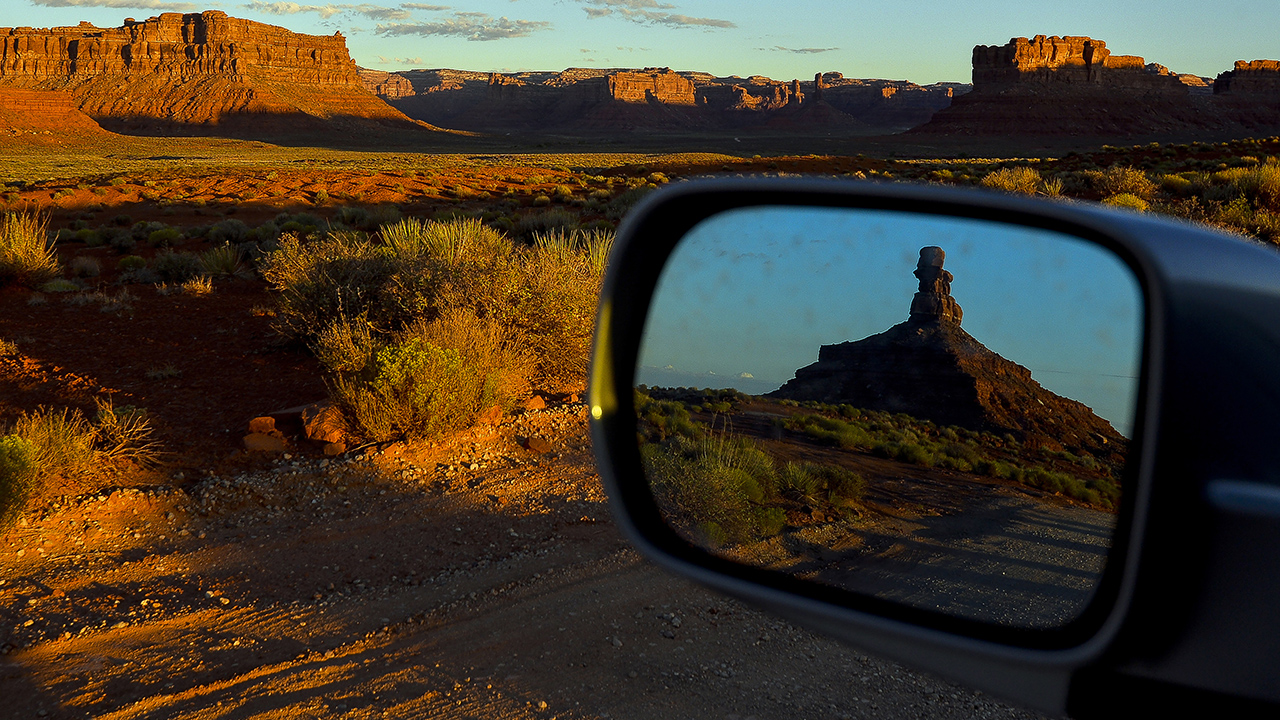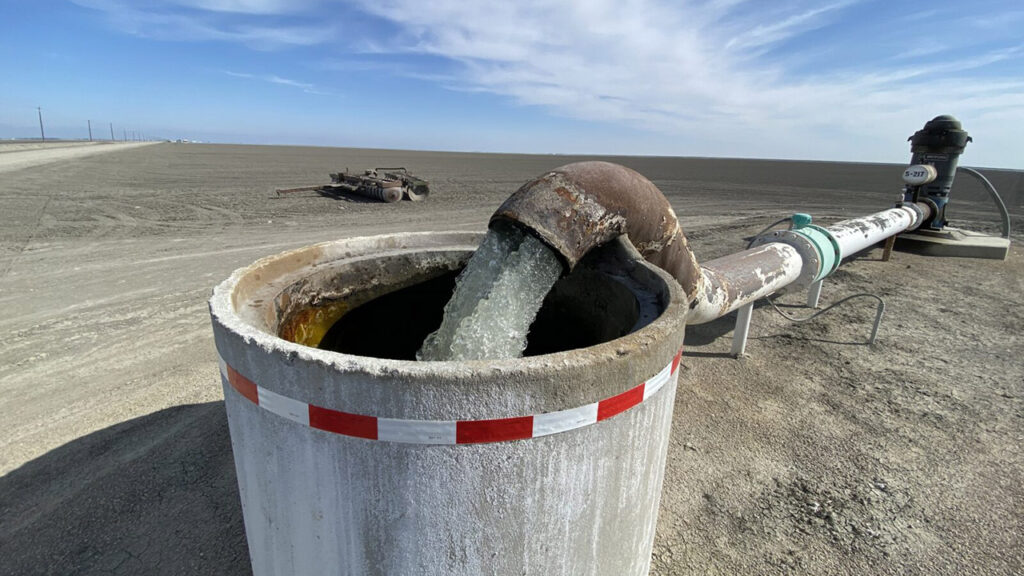FILE — The sun rises over Bears Ears National Monument in Blanding, Utah, Aug. 23, 2017. Questions linger over what the recent layoffs and ranger protests at the National Park Service will mean for travelers, who made a record 331 million visits to park properties last year. (Alex Goodlett/The New York Times)

- Budget cuts and layoffs at public land agencies threaten visitor services and trail maintenance this summer.
- Reduced staff at wildlife refuges may impact educational programs and access to popular natural sanctuaries.
- The future of volunteer programs at national forests and wildlife refuges remains uncertain due to staff cuts.
Share
|
Getting your Trinity Audio player ready...
|
Questions linger over what this year’s layoffs and ranger protests at the National Park Service will mean for travelers, who made a record 331 million visits to park properties last year. Adding to the confusion is the federal court ruling Thursday that the firings were done unlawfully and agencies must rehire their cut workers.
The National Park Service’s parks, sites and monuments, however, are not the only public lands affected by the seesawing reports of staffing levels and budget cutbacks brought on by the Trump administration’s goal to trim government spending.
The Bureau of Land Management, the U.S. Forest Service and the U.S. Fish & Wildlife Service, the three largest managers of public land in the United States, also keep public lands accessible. The BLM alone covers 235 million acres, or nearly one-tenth of the country. If these agencies lose many of their workers, who will be around to handle the influx of visitors as summer travel season gears up?
“A lot of the American public has no idea what we provide,” said Mary Erickson, a retired forest supervisor at Custer Gallatin National Forest in Montana, which averages 3 million visitors a year.
Custer Gallatin has so far lost 42 employees — roughly a quarter of its nonfirefighting workforce — and the Forest Service as a whole has experienced a reported 3,400 layoffs. Whether the workers will be reinstated is unclear, but those affected perform vital tasks that may be invisible to the public, such as clearing trails; managing cabin and campground bookings; and cleaning public toilets. And these agencies have already been operating at a deficit, thanks to budget shortfalls and understaffing.
For now, disruptions at visitor centers and campgrounds appear likely, though the scale is uncertain.
“As long as we don’t have wildfires, major flood events or windstorms, it might be easy to say everything’s fine,” Erickson said. “But a year from now, these things start to add up.”
The BLM, the Forest Service and the Fish & Wildlife Service balance recreation with other uses on their properties, such as mining, hunting and logging. Here’s what to know when you’re considering a trip to any lands maintained by these agencies:
Bureau of Land Management
What the agency oversees: As part of the Interior Department, the BLM has historically walked a fine line between recreation and development — 90% of BLM lands are open to oil and gas leasing. The agency also manages livestock grazing, timber harvesting and other commercial activities on public land.
Many of the vast desert landscapes in the Western states are owned by the BLM. It is these lands that allow visitors to sleep under the stars in the High Sierra, see petroglyphs in the Rio Grande Valley of New Mexico and view the stark Mojave Desert while driving a section of Route 66. BLM is most appealing for its accessibility: Anyone can camp free on these lands, and (unlike national parks) there are rarely lines to get in.
Related Story: Trump Considers Massive Extension of Travel Ban Targeting Up to 43 Countries
Trump cuts: Despite the fact that the BLM has seen a 41% increase in recreational visitors since 2012, severe budget cuts — including an $81 million reduction out of a total $1.7 billion budget just last year — have hampered the agency’s ability to apply additional management to sites that have been designated to be areas of critical environmental concern. The new administration has laid off 2,300 federal employees of the Interior Department, which includes the National Park Service and the BLM.
During his first term, President Donald Trump, urged by ranchers and Republican lawmakers, sharply reduced the size of the Bears Ears and Grand Staircase-Escalante national monuments in Utah, both of which are part of the BLM and were established by Democratic presidents. President Joe Biden restored the protections less than a year into his term.
Going forward: Last June, Congress passed the Public Lands Rule, which ensures that land conservation is on an equal footing with commercial uses, and promotes co-stewardship with tribal nations. Soon afterward, congressional Republicans introduced a bill to repeal it.
U.S. Forest Service
What the agency oversees: Falling under the Department of Agriculture, the Forest Service manages around 193 million acres of national forests and grasslands.
Visitation to national forests spiked in 2020 during lockdowns. The numbers have since evened out, though the Forest Service remains an important escape for roughly 160 million people. Among the top activities in forests? Downhill skiing — many ski resorts, both in the Northeast and Western states, are found on Forest Service land.
Trump cuts: Last month, the agency laid off 3,400 employees, many of whom play roles in stewarding the more remote backcountry areas beloved by backpackers and more experienced campers.
Going forward: Fewer wilderness rangers will mean a decreased ability to conduct search-and-rescue operations and patrol for the illegal use of dirt bikes and all-terrain vehicles in designated wilderness areas. And on trails, there will be fewer staff members to clear fallen trees, fix damaged signs and repair collapsed bridges.
Related Story: 5 Game-Changing Wellness Travel Trends to Watch in 2025 and Beyond
Cuts to the agency are nothing new. In August, the Forest Service chief indicated that the agency was facing a “potentially budget-limited future” and, as a result, paused all seasonal hires. Wildland firefighters have kept their jobs; however, during fire season, firefighting crews rely on nonfirefighting personnel for assistance.
Many forests have historically turned to local nonprofit groups to help with maintenance. Portions of the Pacific Crest Trail and the Appalachian Trail run through mountains stewarded by the agency, and the freezing of federal funds, contested in federal courts, means that groups such as the Pacific Crest Trail Association may be unable to protect trails from environmental threats such as heavy rain and wildfires.
U.S. Fish & Wildlife Service
What the agency oversees: Wildlife refuges. Totaling more than 560 refuges spread over beaches, islands, lakeshores, mud flats and salt marshes, the National Wildlife Refuge System, whose lands receive over 50 million visitors annually, is the world’s largest network of public lands dedicated to the conservation of wild flora and fauna.
Compared with national parks and forests, the U.S. Fish & Wildlife Service is a much smaller operation, often relying on local volunteers and community members to keep facilities running. Without full-time staff, the volunteer programs’ future is uncertain.
Trump cuts: A reported 470 biologists, natural resource professionals and other workers have been laid off since last month; that is on top of an ongoing “staffing crisis,” according to the National Wildlife Refuge Association, that has reduced the national U.S. Fish & Wildlife Service workforce by a quarter since 2011.
Going forward: The cuts could affect visitor access, educational programs and day-to-day operations at some of the country’s most popular natural sanctuaries, such as Crystal River National Wildlife Refuge, where families can come face-to-face with Florida manatees every winter. In Hawaii, cuts have also come to Kilauea Point National Wildlife Refuge, a stunning cliff-side paradise that welcomes half a million visitors per year.
And the refuges hold particular importance for bird watchers. Tule Lake National Wildlife Refuge, on the California-Oregon border, is a stopping point for 80% of waterfowl along the Pacific Flyway; staff members help rent out boats for the refuge’s popular self-guided canoe trail.
Perhaps most famous is the Pelican Island National Wildlife Refuge in southern Florida, which in 1903 became the first established refuge, by an executive order from President Theodore Roosevelt. Over a century later, its brown pelicans, great egrets and roseate spoonbills continue to be a prime draw, along with the federally protected green sea turtle.
—
This article originally appeared in The New York Times.
By Alex Schechter/Alex Goodlett
c.2025 The New York Times Company
RELATED TOPICS:
Categories

Steam Down for Thousands Tuesday, Downdetector Shows

Mexico Imposes 156% Tariff on Sugar Imports


















